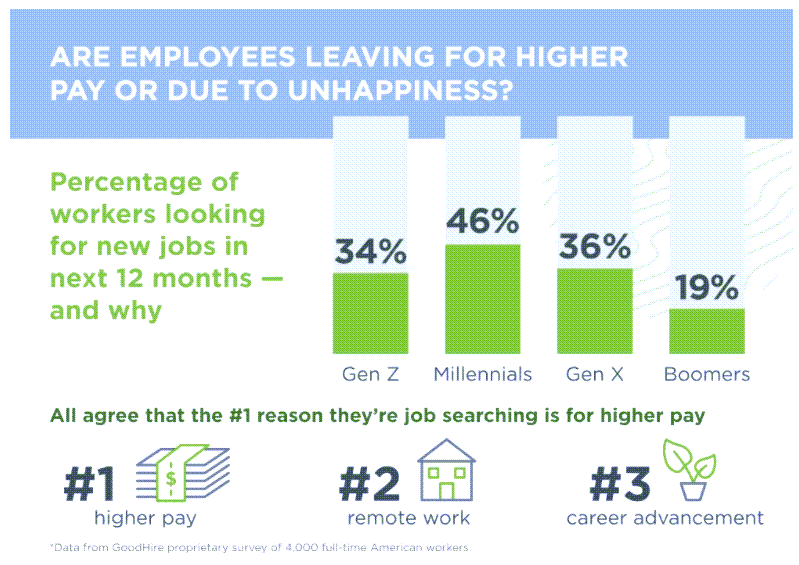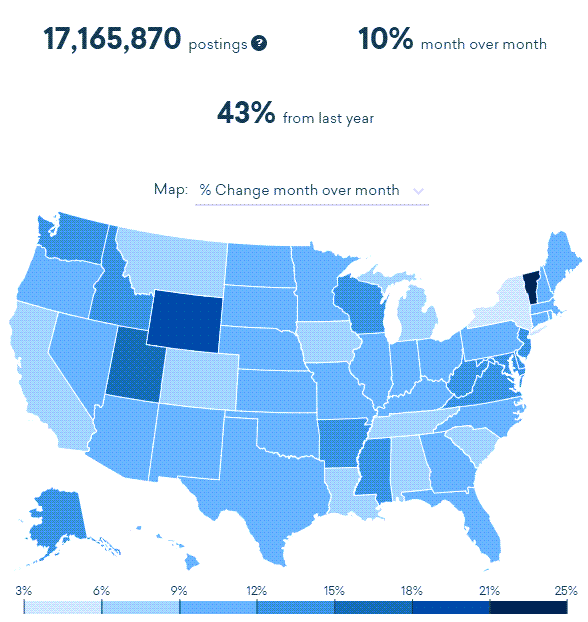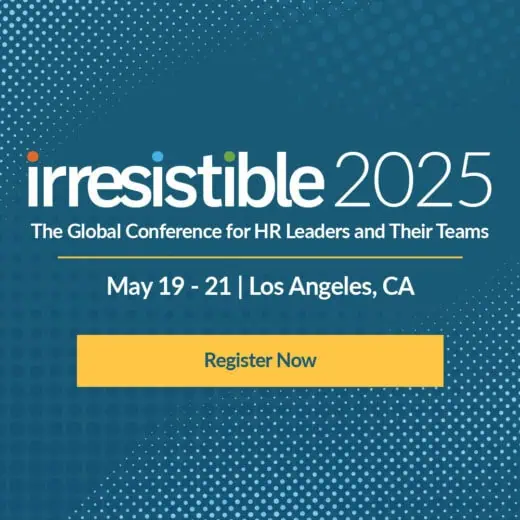Welcome to 2022: Too Many Jobs, Not Enough People
Welcome to 2022. The job market is a bit crazy and we’re in for one of the most dynamic years in our lives. Let me try to explain what’s going on.
First, let’s discuss the Great Resignation (which I call The Great Migration). People are quitting their companies, changing careers, and upgrading their jobs as fast as I’ve ever seen. If you believe the BLS statistics (which are based on surveys), almost a third of the US workforce will “quit” this year, amounting to more than 4 million people every month.
Where are these people going? It depends. Lots of healthcare workers are taking a break from the profession, but new research shows that Millennials (mid-career professionals) are just leaving their jobs to find a better one. Wages are going up at a rate I’ve never seen, and it’s touching every job – from frontline retail workers to hospitality, white-collar, and professionals. (Conference Board expects the biggest year of raises in a decade.)
 |
Why is all this happening?
Two colliding reasons. First, of course, the pandemic has freaked everyone out. More than 80% of workers are suffering from mental health issues (I just had a short vacation and had to wear a mask for eight hours and feel a bit traumatized myself), so they’re re-examining their lives. And this is a good thing. As I’ve discussed in many of our research studies, great careers are built by “sampling.” People who move around, try lots of different jobs, and discover what they’re good at – outperform those who stay put.
But there’s another big reason: the economy is on a tear. And I mean an incredible one. I’m not sure I’ve ever seen a jump in demand like this. It’s almost as if two years of pandemic has unleashed a massive demand for everything: food, houses, entertainment, healthcare, everything. I can’t find an industry (except those directly impacted by covid) that isn’t seeing massive demand. So there are lots of great jobs out there. (The unemployment rate is now 3.9% and dropping.)
Lots of research supports this. Studies by EMSI Burning Glass and Eightfold (our research partner) show that there are almost 17 million “open positions” in the United States today. This means almost one in nine jobs are “vacant.” As far as wages go, the BLS data supports the increase and every company I talk with tells me they’re raising wages. Deloitte, my prior employer, just allocated a billion dollars to wages and this is a private company run by the partners. Everyone is throwing money at people.
 |
So that’s it: lots of jobs and not enough people, right? Should we just wait for more babies to be born and ask older people to come back to work? Sure these are all good ideas, but there’s something else going on too. And this, to me, is the really big story: the big migration.
As I wrote about a few weeks ago, workers are not just moving to better jobs and better companies, the entire economy is transforming. And fast. So let me dig into this topic.
For more than a decade analysts have been writing about the role of automation on work. Years ago academics at Oxford predicted that almost half the jobs of today would be “going away.” Well, they didn’t go away at all, they just moved. They changed. And this job or work transformation is now happening at light speed. And the culprit is our old friend, technology.
For most of the last ten years, companies have been going through what we used to call a “digital transformation.” In the early stages, this meant “learning how to use the web” and “building apps and websites to reach our customers.” The old back-office mainframe infrastructure we had got disrupted, so companies went out and hired consultants to help. And the consultants (I was one of them) went into companies and taught them how to build cloud-based applications, how to build apps, how to replace legacy systems with cloud systems, and how to build expertise in design, software engineering, and data. The old saying “software is eating the world” pretty much meant “let’s automate everything,” and that’s our “digital transformation.”
The examples are everywhere. Starbucks’ app lets you buy, pre-order, get points, and soon listen to music. Most retailers sell their products through Omnichannel, and you can go to the store and safely pick up what you ordered online. Food, entertainment, music, consumer products – they’re all now available online. And frankly, this is no longer state of the art: it’s just the way we do business.
This shift created a huge demand for software engineers, data scientists, and now AI engineers. So these job families exploded with growth and wages went up. Along with the growth came a new industry of digital academies, bootcamps, educational offerings, degrees, and online learning. All good stuff.
If you’re a nurse, truck driver, or retail worker, this made your job better. You can now focus on the people side of your job and the app and online system handles the administrative stuff. And if you’re interested in data, you can start to analyze all this data and get even better at your job. And this particular workforce transformation has been going on for five years or more.
From Digital Transformation To Industry Convergence
But now it’s taking on a new level. There’s a tsunami coming behind it: and I’m not sure what to call it yet. The best phrase I can think of is “industry convergence.” And these are the conversations I’m having with HR executives every single day.
The business you’re in, whether it’s banking, retail, telecommunications, healthcare, or entertainment – is being disrupted and redefined by another industry. And that “adjacent industry” or “adjacent market” is eating into your business. Not only is it reducing your margins, but it’s also taking your customers. Because the biggest “digital transformation” that occurred is in us, the consumer. We don’t separate our buying patterns from company to company anymore: we expect everything to be at our fingertips, digitally available, on our phones. And this means whatever product, service, or offering we buy – it has to be just as good as its adjacent business.
We are launching a huge new line of research on this topic because it is transforming every company’s workforce. But to make it easier to understand, let me give you some examples.
Banking. You’re a bank and you sell loans, checking accounts, savings accounts, and all sorts of other financial services. Your company was optimized to sell through the branch network, but now you sell this online. You have call centers, a great mobile app, and all sorts of fantastic back-office systems.
Along comes a startup like Coinbase, Varo, Chime, Brex, Quicken Loans, or one of the other 100+ fintech startups. These are essentially software companies that sell financial services. They don’t have 30% of their employees in branches or sales offices (like banks do). They have 30% of their employees in product management, analytics, SEO, and outbound marketing. Their talent profile is radically different… and yes, they’re disrupting banks.
And then there are the Crypto Startups. Coinbase publicly announced it’s willing to pay whatever it takes to get engineers, and most other startups are doing the same. If you’re a bank, how do you compete?
Healthcare. You’re a big network of hospitals or a large research-based healthcare organization. You have 60% of your workforce in patient care, administration, and healthcare management. But more and more of your healthcare diagnostic, treatment, and research is being done online. Your IT staff, which is dealing with legacy systems, is behind. You now need world-class skills in cyber security, cloud engineering, informatics, and vendor management.
What happens when CVS or Walmart start promoting wellbeing programs along with testing and pharmacy? Are you ready for the low-cost, high-scale business model of healthcare? And by the way, Walmart might want to get into Financial Services too.
Telecommunications. You’re dealing with the impact of 5G, which changes the technology stack, services, and business models for your company. You’re suddenly in the consulting business, helping companies learn how to leverage embedded systems and real-time communications. But you’re also trying to build a media company, because all the big media players (including Facebook) are starting to build their own bandwidth.
Do you have the right 5G skills in your engineering and network team? What about the new consulting and business models your customers will adopt? And if you’re a conglomerate like AT&T, Comcast, or Verizon and you own a media company, how do you manage the fact that the leadership, skills, and talent models are completely different? And by the way, Meta Platforms (aka Facebook) is paying engineers and media professionals whatever they want right now.
Oil and Gas. You’re making plenty of money selling carbon-based energy, but you know the future is electric, solar, nuclear, and other forms of energy. Are your petroleum, drilling, and construction engineers ready to move into this new market? How well do you understand the battery business and the mining business around battery chemicals? What is your talent strategy for low-carbon businesses? And by the way, all the auto manufacturers are looking for batteries and charging stations. Is this your business now?
Retail. You’re a retailer like Walmart, Target, or Sainsbury’s. Your customers want access to a wide variety of products, they want affordable prices, and they want their products delivered quickly. Retailers create omni-channel buying experiences but it goes much farther. Should they have their own distribution network? Should they have a membership program? Should they be investing in drones or third-party logistics? Is retail now a consumer service and distribution industry?
Auto manufacturers. You’re electrifying your fleet, you’ve built a new system for power and batteries. But your chip supply is low and you can no longer outsource the telematics and instrumentation to third parties. Do you have to get into the chip design business? The real-time software and operating system business? Are you becoming a software and online service company, including a mapping company?
I won’t belabor the point. The big story for 2022 and beyond is not just recovery from the pandemic. It’s the hyper-fast, accelerating world of industry convergence. Every company is dealing with this, I hear about it every day.
As far as hiring, this is going to be your biggest challenge. It’s time to dig deep into your company’s value proposition, focus on your culture, and spend a lot more time developing and supporting your internal teams.
And if you’re a job seeker, this is your year. We’re going to be flooded with new jobs, new careers, and new opportunities. Strap in, take a risk, and try something new.
We are soon introducing a new line of research to help you with all these issues. We call this the Global Workforce Intelligence Project. Stay tuned, more coming soon.
Additional Resources
The Healthy Organization: An Integrated Approach to Wellbeing, Productivity, and Employee Brand

